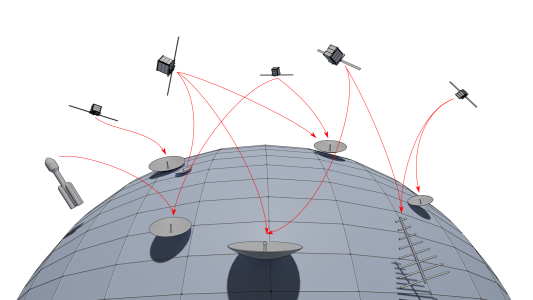Satellite Identification and Localization experiment

SIDLOC (Spacecraft Identification and Localization) is a new transmission scheme proposed by Libre Space Foundation to enable LEO satellite identification and tracking. The SIDLOC system relies on a reduced size autonomous transmitter that requires minimal integration and area on the carrier spacecraft. The ground segment of the SIDLOC system utilizes the existing SatNOGS network and the UHF band to perform the signal demodulation and identification. The SIDLOC system uses DSSS (Direct Sequence Spread Spectrum) PSK modulated signals with an effective bitrate of ~50 bits/s. The use of DSSS is crucial in order to achieve reliable reception with the minimum possible transmission power. Through an accurate Doppler frequency shift estimation mechanism, the SIDLOC system provides orbit determination capabilities, enabling open and independent SSA (Space Situational Awareness) activities. Despite the fact that SIDLOC operates using the downlink, a feature that is not available in OPS-SAT SDR frontend, vital information can be retrieved performing the mirrored case; one or more ground stations transmitting SIDLOC modulated signals to the satellite. The goal of this activity is to utilize the SDR capabilities of the OPS-SAT satellite, test the SIDLOC system under realistic conditions and identify the impact of the LEO channel impairments on the SIDLOC system.
